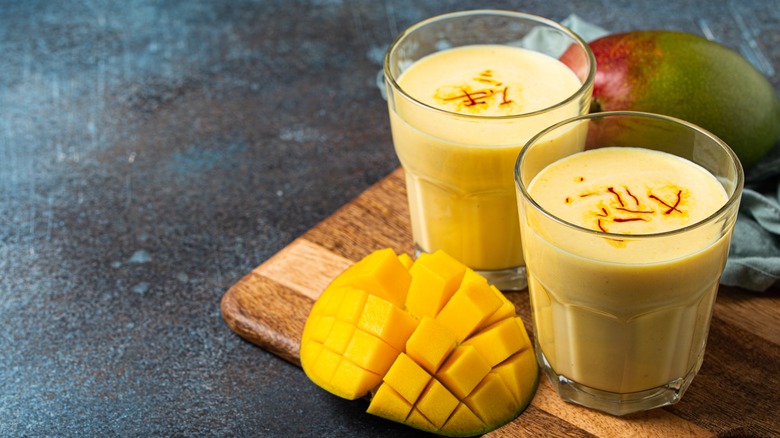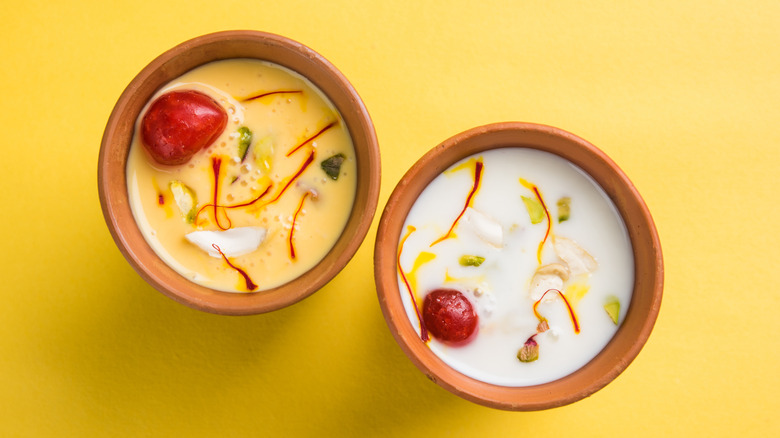The History Behind India's Refreshing Mango Lassi Drink
Indian cuisine is one of the most complex and colorful, each stew, grilled meat, and chutney consisting of a flavorful foundation of numerous toasted spices, aromatics, and herbs. There's no better complement to a spicy, rich Indian meal than a tangy, sweet, and refreshing mango lassi. While its arrival in North America may only be decades old, India's refreshing lassi has been a quintessential drink for millennia.
Considered by historians to be the original smoothie, lassi originated in the Northern Indian state of the Punjab in 1000 B.C. The etymology of "lassi" is debated among historians, with some arguing that it comes from the Sanskrit word for "saliva-like," referring to the thick, frothy texture of its main ingredient of raw yogurt or curdled milk. Today, "lassi" is also a Punjabi term for buttermilk, which can be substituted for sour yogurt. The preparation of lassi started as a tangy mixture of sour yogurt and spices like cumin and cardamom — and both a salty and sweet version emerged from the fundamental recipe. Mango pulp was likely one of the first lassi flavors as mangos are native fruits in India and Southeast Asia.
Lassi's ancient roots coincide with the ancient practices of Ayurveda, Indian dietary and medical principles that are just as popular today. Ancient Ayurvedic medicine touted lassi as promoting digestive health because yogurt consists of gut-healthy bacteria. Ayurveda and lassi are two important legacies of Indian culture that now garner worldwide appeal.
Indian lassi variations and traditions
Lassi originated before the invention of refrigeration, and a fermented dairy product was certainly a way to extend the life of fresh milk. To keep their lassis cool and refreshing, ancient customs served them in clay mugs known as kulhars topped with malai, a cheesy clotted cream. The custom still exists today in rural India, but lassis are ubiquitous menu items in modern establishments from coffee shops to cafes to restaurants. You can order sweet or salty lassis, the former consisting of a base of yogurt, water, and sugar blended with fruit and dessert spices like cardamom. Salty lassis swap sugar for salt and add savory spices like cumin and saffron, finishing the drink with a scoop of malai. Fresh mint is a popular herb that'll augment the cooling nature of a salty or sweet lassi.
Mango is the most popular lassi flavor in India and beyond, but pineapple, strawberry, banana, and rosewater are also widely available options. Modern recipes pair an ultra-sweet mango lassi with a squeeze of lime juice for a tart, citric dimension. Indians enjoy lassis as a breakfast smoothie, a mid-afternoon snack, or a digestive aid after a spicy, heavy dinner. Both sweet and salty lassis toast their spices before adding them to the pure to maximize their fragrance and the depth of flavor of this cooling, yogurt drink. Ayurveda and modern biomedicine recognize the health benefits of yogurt and the many spices and herbs that comprise lassi recipes.

